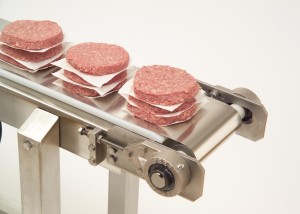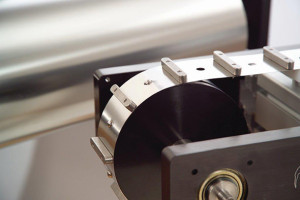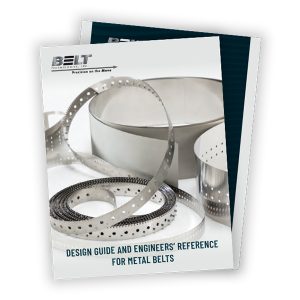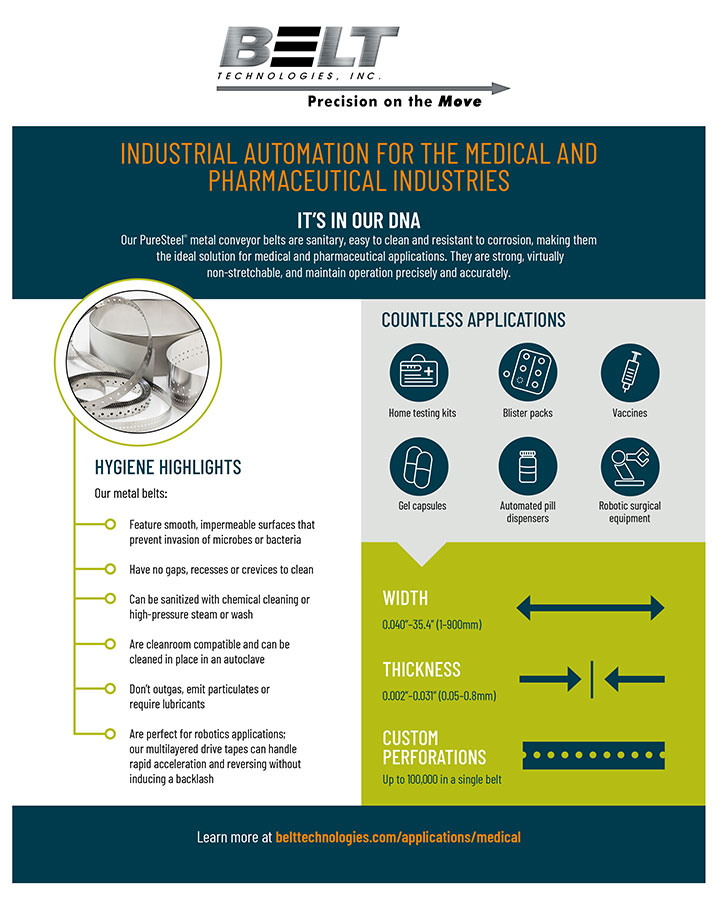Safe, Fast Food Processing with Stainless Steel Drive Tapes
 When specialized equipment began replacing short-order cooks, the fast-food industry reached an important turning point. Since then, the list of possible applications for automated systems and machines has expanded to include grills, ovens, fryers, soft-serve dispensers, drink makers, and more. These systems don’t just maintain consistent speed throughout an entire shift—they keep the quality of the food consistent, too. Just as in industrial-scale food-processing plants, these machines must be easy to clean and able to endure long periods of running time in high and low temperatures.
When specialized equipment began replacing short-order cooks, the fast-food industry reached an important turning point. Since then, the list of possible applications for automated systems and machines has expanded to include grills, ovens, fryers, soft-serve dispensers, drink makers, and more. These systems don’t just maintain consistent speed throughout an entire shift—they keep the quality of the food consistent, too. Just as in industrial-scale food-processing plants, these machines must be easy to clean and able to endure long periods of running time in high and low temperatures.
Metal Drive Belt System Engineering, Made to Order
Recently, a major US original equipment manufacturer (OEM) for the fast-food industry was approached by their top customer with a design challenge. The client was seeking to add automation to a cooking process to achieve three objectives:
- Remove the manual decisions that create opportunity for errors in the critical function of the cooking process.
- Enable end users to set all cooking parameters with a “one-touch” button.
- Maintain quality and consistency in the cooked product while reducing staff training, maintenance, and repair costs.
Achieving these goals would allow the restaurant to expand its menu without adding unnecessary equipment, labor, or maintenance costs, while improving the quality and appearance of their products.
In developing design options for the new commercial grill system, the equipment manufacturer employed an in-house multifunctional team for design engineering, manufacturing engineering, field service, and marketing. This team was responsible for engineering the grill, building the prototypes, modifying the designs, and writing the performance reports. Part of the testing phase included a simulated quick-service “restaurant” in which food could be cooked as though it were an actual customer kitchen.
A critical component of the design was the positioning of two cooking platens, one on top of the other. By actuating a precise movement, a programmable, repeatable distance can be set between the two platens. The end user envisioned positioning the upper platen within 0.002” of a number of various stop positions above the lower platen. This positioning would allow the user to program a critical feature of the cooking process for various products without complex operator involvement. Three techniques were considered: cables, inclined planes, and steel belts. When the team realized they needed design assistance, the project engineer contacted Belt Technologies, Inc.
Stainless Steel Drive Belt Solutions, Served Fast
In a food-processing environment, stainless steel offers cleanliness and exceptional performance, particularly in extremely hot temperatures. As an added benefit, the steel provides a low-mass belt that performs well without lubrication.
 Steel drive tape—a derivative of endless steel belts—was envisioned. Drive tapes are ideal in applications where rotary motion must be converted to linear motion. Similar drive tapes are used in robotic arm actuators, carriage positioning systems, and mirror positioning systems for military and satellite use. For durability, the drive tape is most often fitted with reinforced end tabs, thus ensuring a firm and secure contact is maintained where the tape is terminated. Specifically, the use of steel drive tapes in this application could provide near-zero backlash, no stretch, and the repeatability desired by the customer.
Steel drive tape—a derivative of endless steel belts—was envisioned. Drive tapes are ideal in applications where rotary motion must be converted to linear motion. Similar drive tapes are used in robotic arm actuators, carriage positioning systems, and mirror positioning systems for military and satellite use. For durability, the drive tape is most often fitted with reinforced end tabs, thus ensuring a firm and secure contact is maintained where the tape is terminated. Specifically, the use of steel drive tapes in this application could provide near-zero backlash, no stretch, and the repeatability desired by the customer.
According to the equipment manufacturer, the steel drive tapes were a “clear winner” early in the design phase. In comparison to inclined planes, the drive tapes were less complex in design and offered a significant advantage in space and weight. The team remarked that the incorporation of the steel drive tape made for a “very intuitive design,” offering multiple benefits over cables in manufacturing simplicity and field service. Due to the non-stretch nature of the steel drive tape, consistent, predictable results in the performance of the grill were possible. The final design incorporates the steel drive tape, terminated to both the upper cooking platen and a drive pulley. The drive assembly moves the upper platen to the required precise position by means of a single button on the operator control panel.
Food Processing Automation Systems, Grilled to Perfection
Implementation of the design proved to be challenging. Although the initial performance of the prototype drive tapes was encouraging, improvements to the design were needed to achieve optimum life cycles. According to Rich Lunden, Belt Technologies’ Manufacturing Manager, the change resulted in lower bending stress with ample strength to carry the load of the cooking platen.
Lunden states, “We like to see a significant ratio of pulley diameter to drive tape thickness. With the original design, we would have needed a pulley diameter that would have exceeded the available space. By changing the belt thickness, we kept the pulley diameter within the customer’s design requirements and achieved the life cycle we were all looking for.”
A slight modification to the location of the pulleys in relation to the termination point of the drive tape was the final correction. The redesigned system was tested to three million cycles, after which a review by an independent metallurgist showed no signs of fatigue.
For further testing, the grill manufacturer monitored a statistically meaningful number of the installed grills and inspected core components for wear. The stainless steel drive tapes have shown no measurable stretch after repeated use, and the metallurgical analysis shows no change in the structure of the belt from installation through usage.
The company considers the project an absolute success, with the grill receiving “approved and released” status from their customer. They said, “the steel belts allowed us to achieve results that were not possible with other alternatives.”



